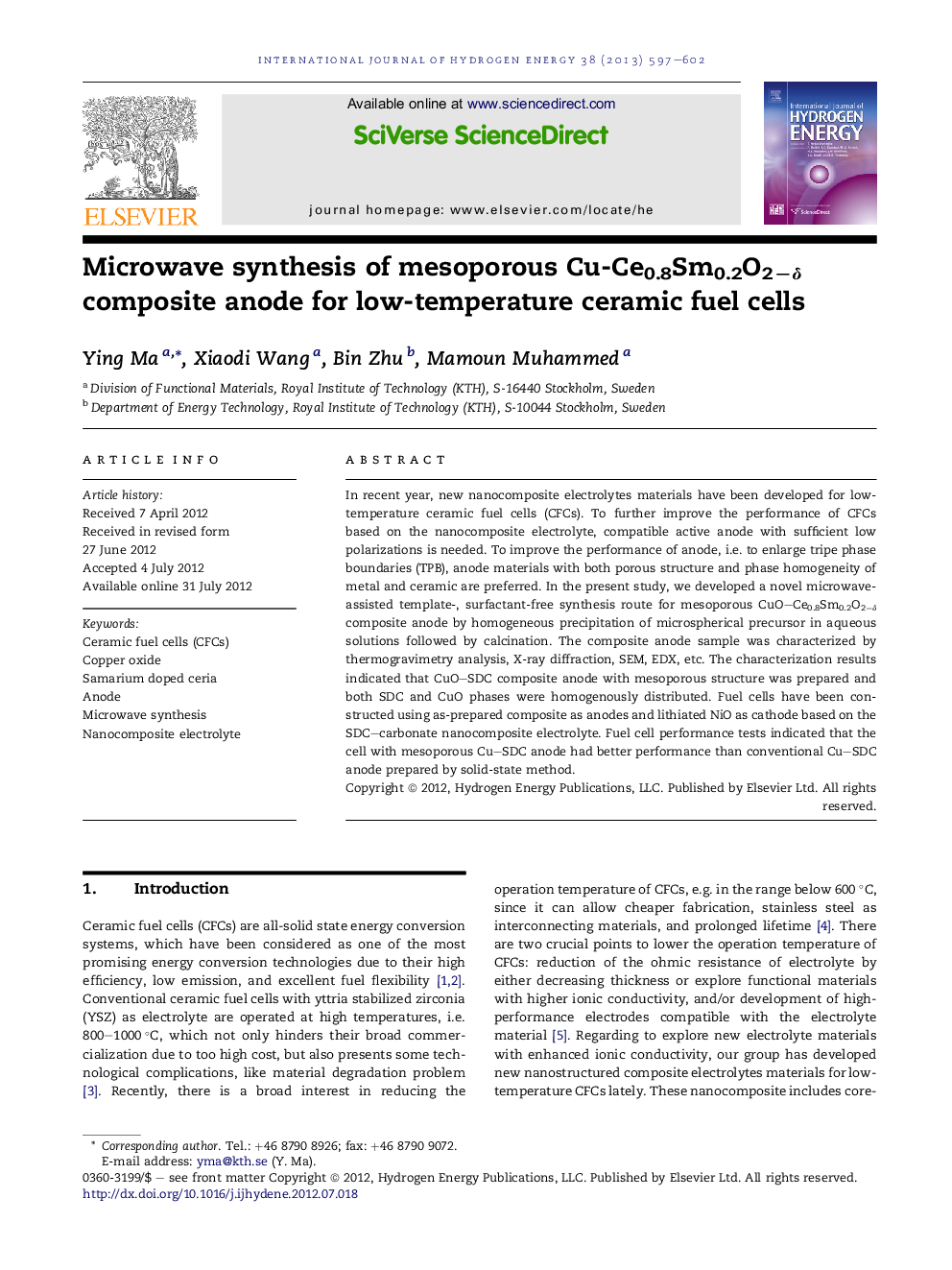| Article ID | Journal | Published Year | Pages | File Type |
|---|---|---|---|---|
| 1274408 | International Journal of Hydrogen Energy | 2013 | 6 Pages |
In recent year, new nanocomposite electrolytes materials have been developed for low-temperature ceramic fuel cells (CFCs). To further improve the performance of CFCs based on the nanocomposite electrolyte, compatible active anode with sufficient low polarizations is needed. To improve the performance of anode, i.e. to enlarge tripe phase boundaries (TPB), anode materials with both porous structure and phase homogeneity of metal and ceramic are preferred. In the present study, we developed a novel microwave-assisted template-, surfactant-free synthesis route for mesoporous CuO–Ce0.8Sm0.2O2−δ composite anode by homogeneous precipitation of microspherical precursor in aqueous solutions followed by calcination. The composite anode sample was characterized by thermogravimetry analysis, X-ray diffraction, SEM, EDX, etc. The characterization results indicated that CuO–SDC composite anode with mesoporous structure was prepared and both SDC and CuO phases were homogenously distributed. Fuel cells have been constructed using as-prepared composite as anodes and lithiated NiO as cathode based on the SDC–carbonate nanocomposite electrolyte. Fuel cell performance tests indicated that the cell with mesoporous Cu–SDC anode had better performance than conventional Cu–SDC anode prepared by solid-state method.
► Mesoporous CuO–Ce0.8Sm0.2O2−δ composite anode was prepared by a microwave method. ► The mesoporous structure and phase homogeneity ensures triple-phase boundary. ► Fuel cells have been constructed using as-prepared composite anode. ► The cell with the mesoporous anode shows superior performance.
